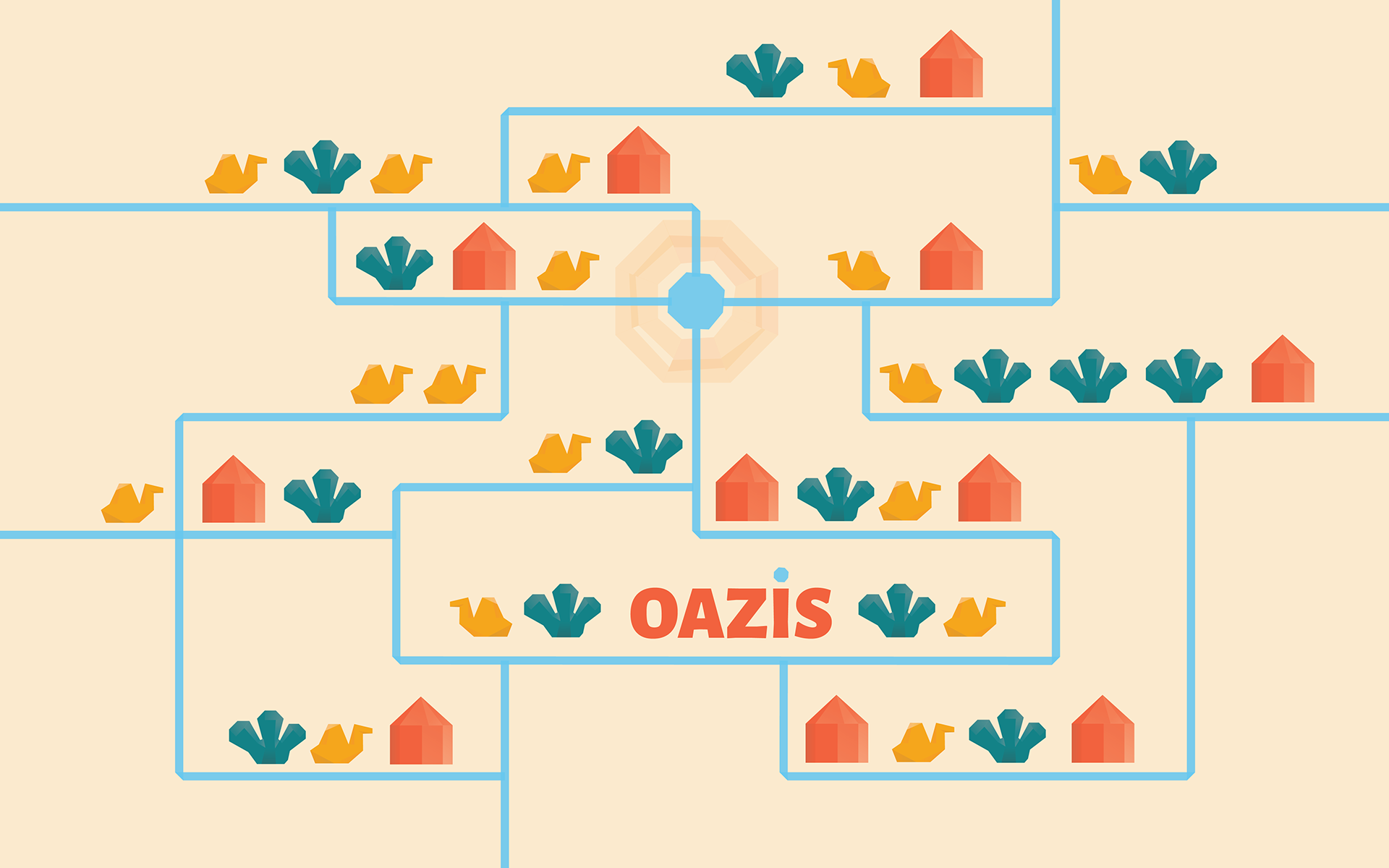
Oazis is a game designed to reward cooperation, not only competition. Its theoretical background goes into game theory (prisoner’s dilemma, etc.), where the players can take revenge in the next round. Mathematically in many rounds of games, the winning strategy is the one where the other player’s actions are mirrored, with an occasional generous cooperation (which does not feel logical, but it works). I could not apply these strategies directly, since here only the difference between the points count, not the total number of houses, but it gave me the idea to gain points through joint effort between players.
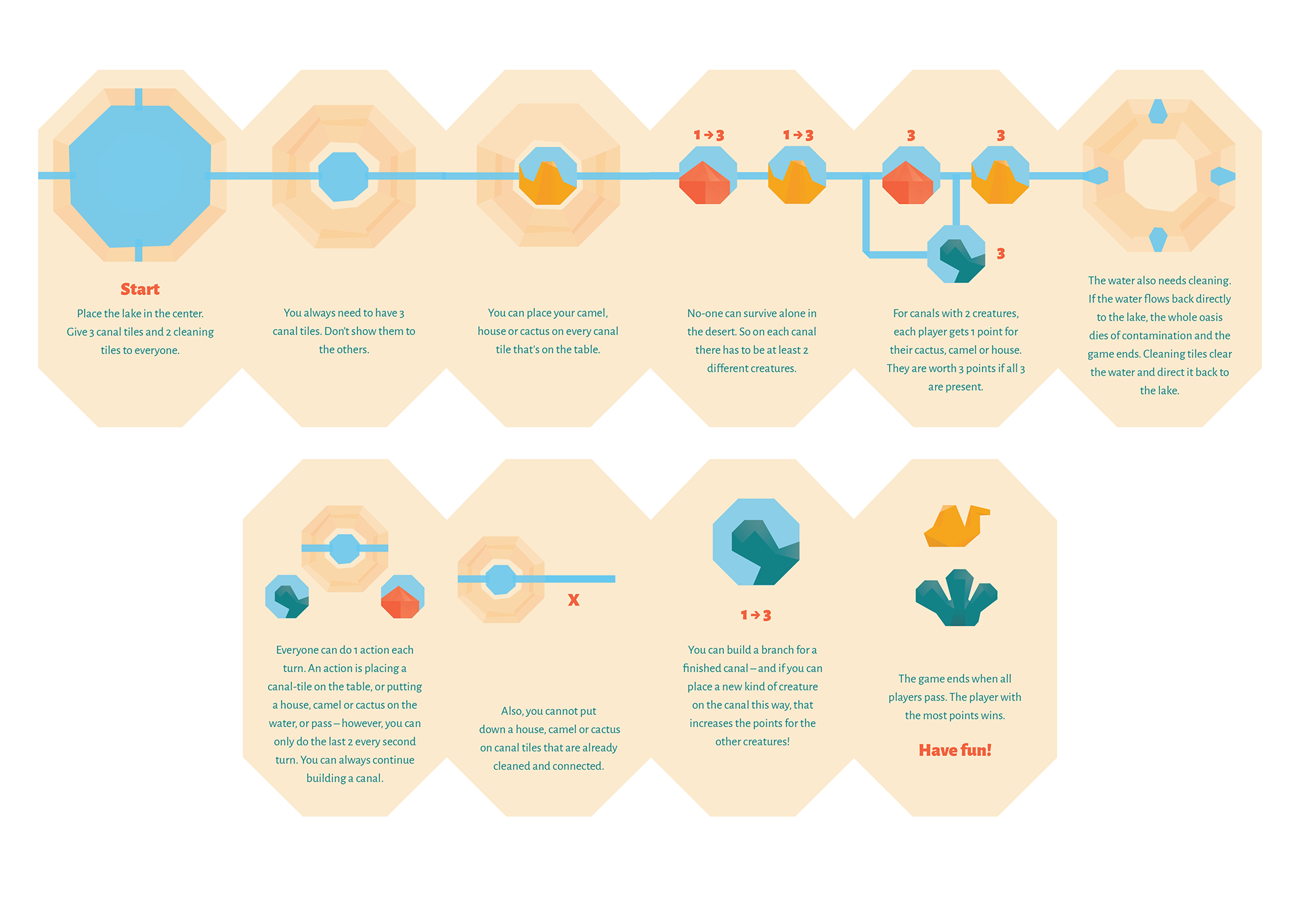
Start:
Place the lake in the center. Give 3 canal tiles and 2 cleaning tiles to everyone.
You always need to have 3 canal tiles. Don’t show them to the others. You can place your camel, house or cactus on every canal tile that’s on the table.
No-one can survive alone in the desert. So on each canal there has to be at least 2 different creatures. For canals with 2 creatures, each player gets 1 point for their cactus, camel or house. They are worth 3 points if all 3 are present.
The water also needs cleaning. If the canals connect back directly to the lake, the water gets dirty, the whole oasis dies and the game ends. The cleaning tile cleans the water and turns it back to the lake.
Everyone can do 1 action each turn. An action is placing a canal-tile on the table, or putting a house, camel or cactus on the water, or pass – however, you can only do the last 2 every second turn. You can always continue building a canal.
Also, you cannot put down a house, camel or cactus on canal tiles that are already connected to the lake and the cleaning tile. You can continue buvilding a branch for a finished canal – and if you can place a missing creature on the canal this way, that increases the points for the other creatures!
The game ends when all players pass.
The player with the most points wins.
Have fun!
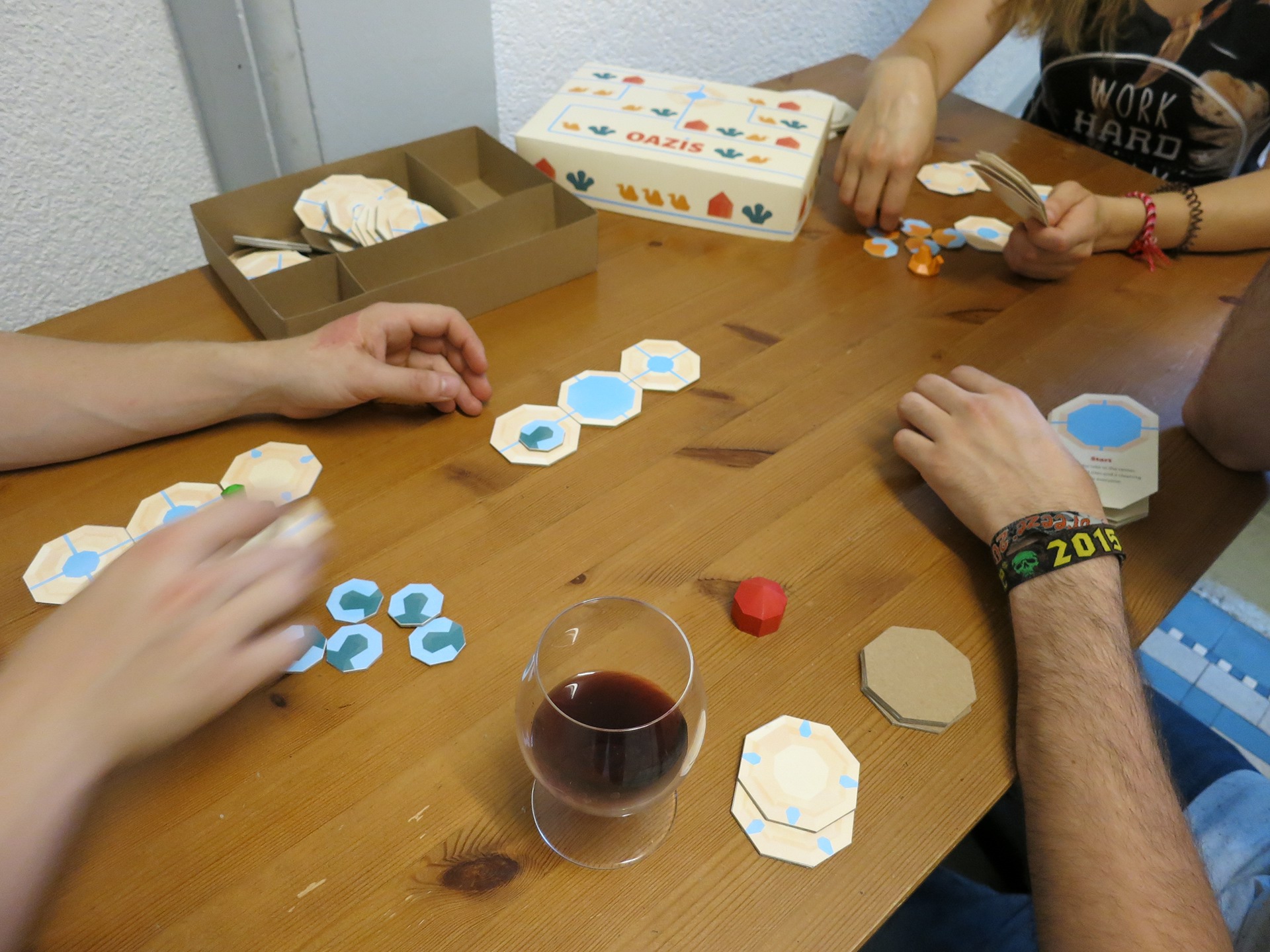
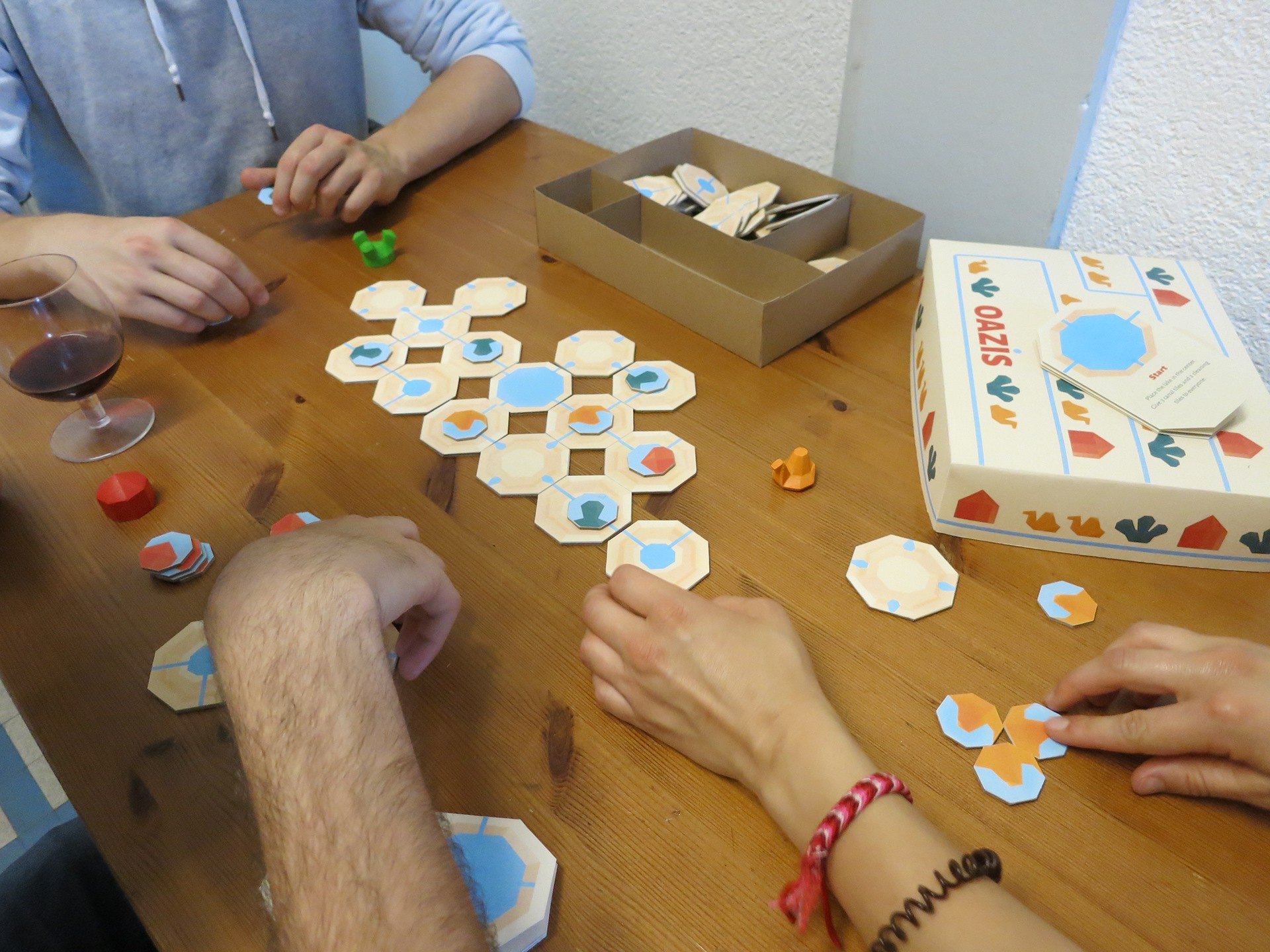
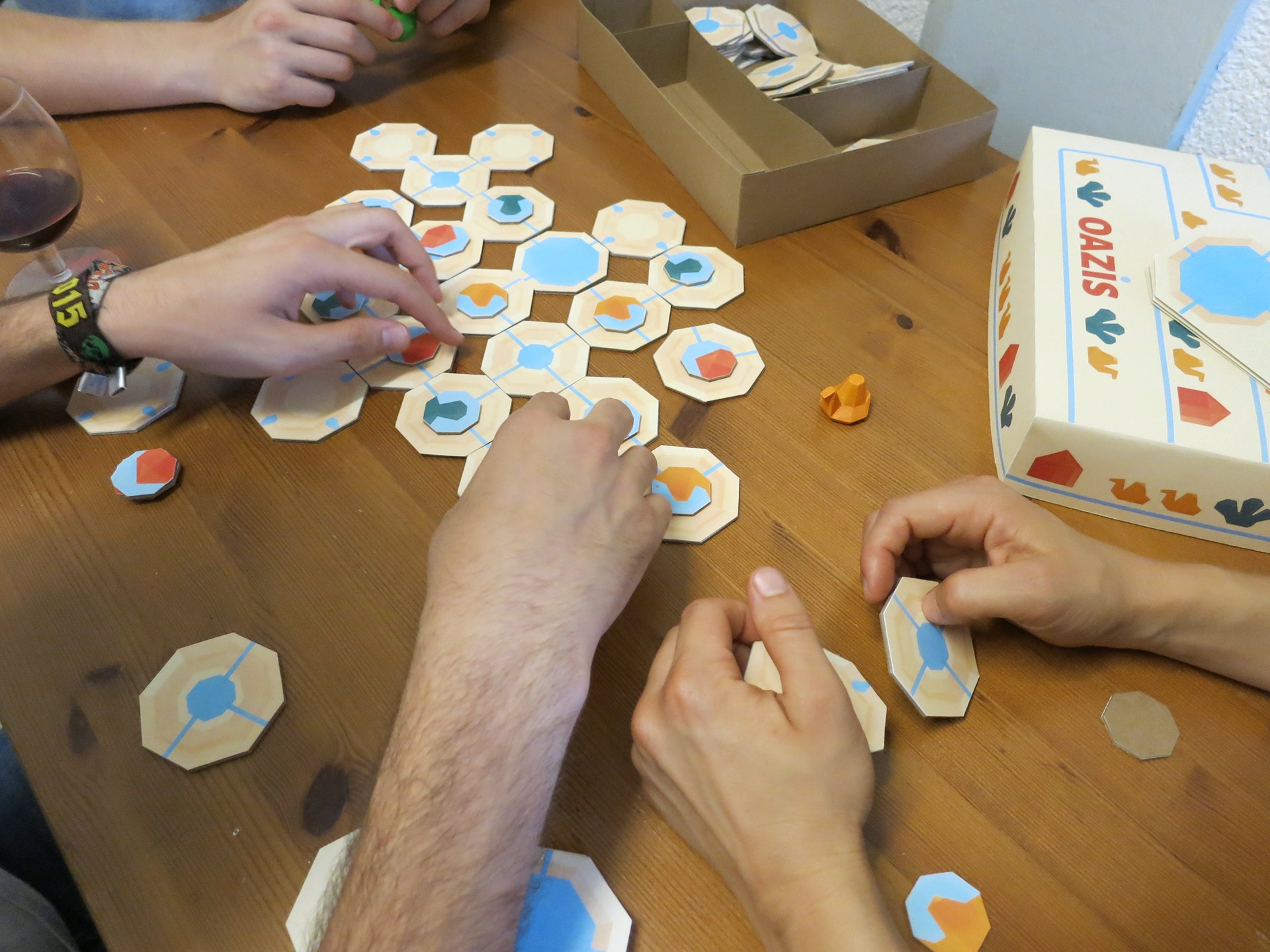
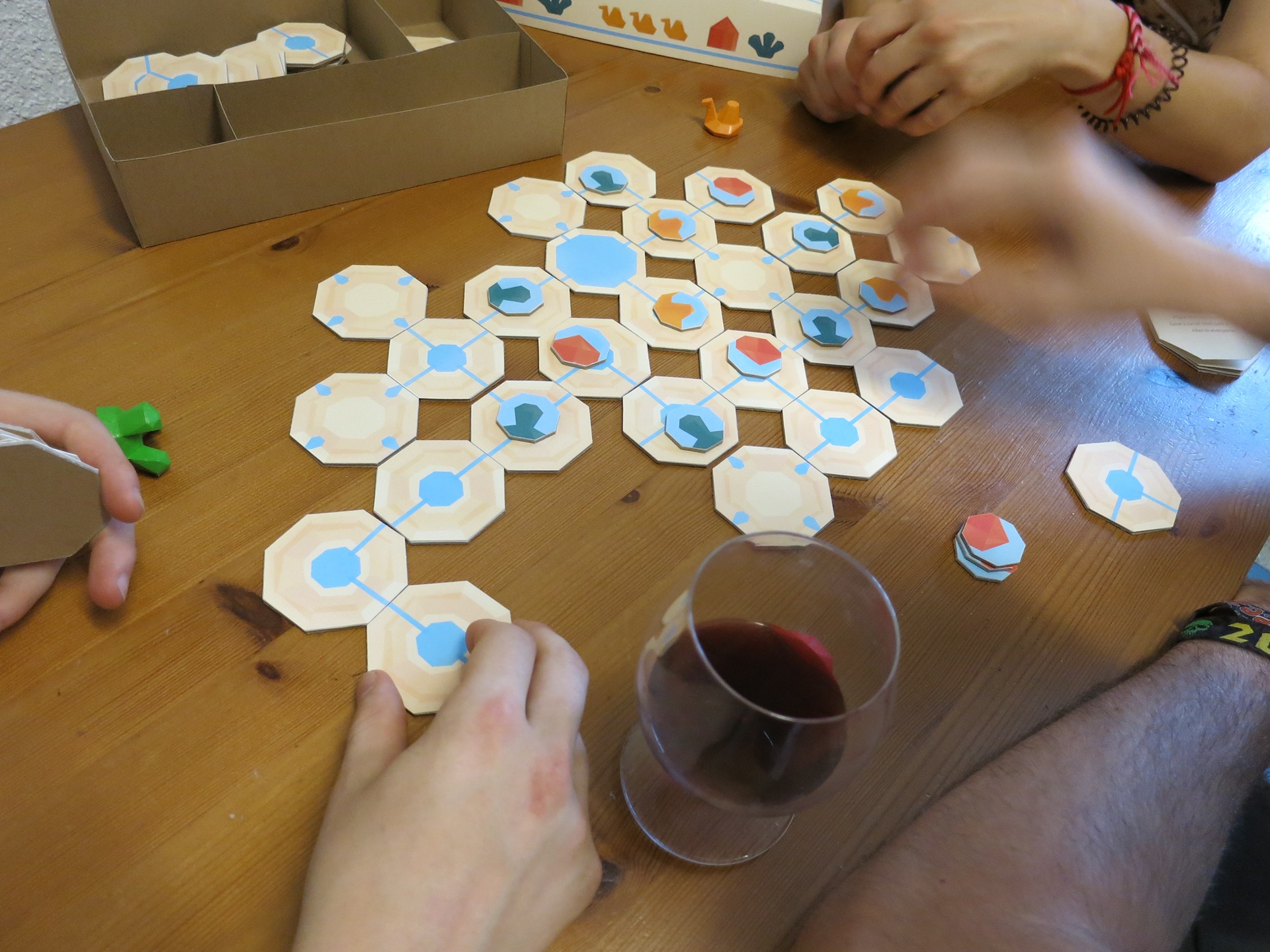
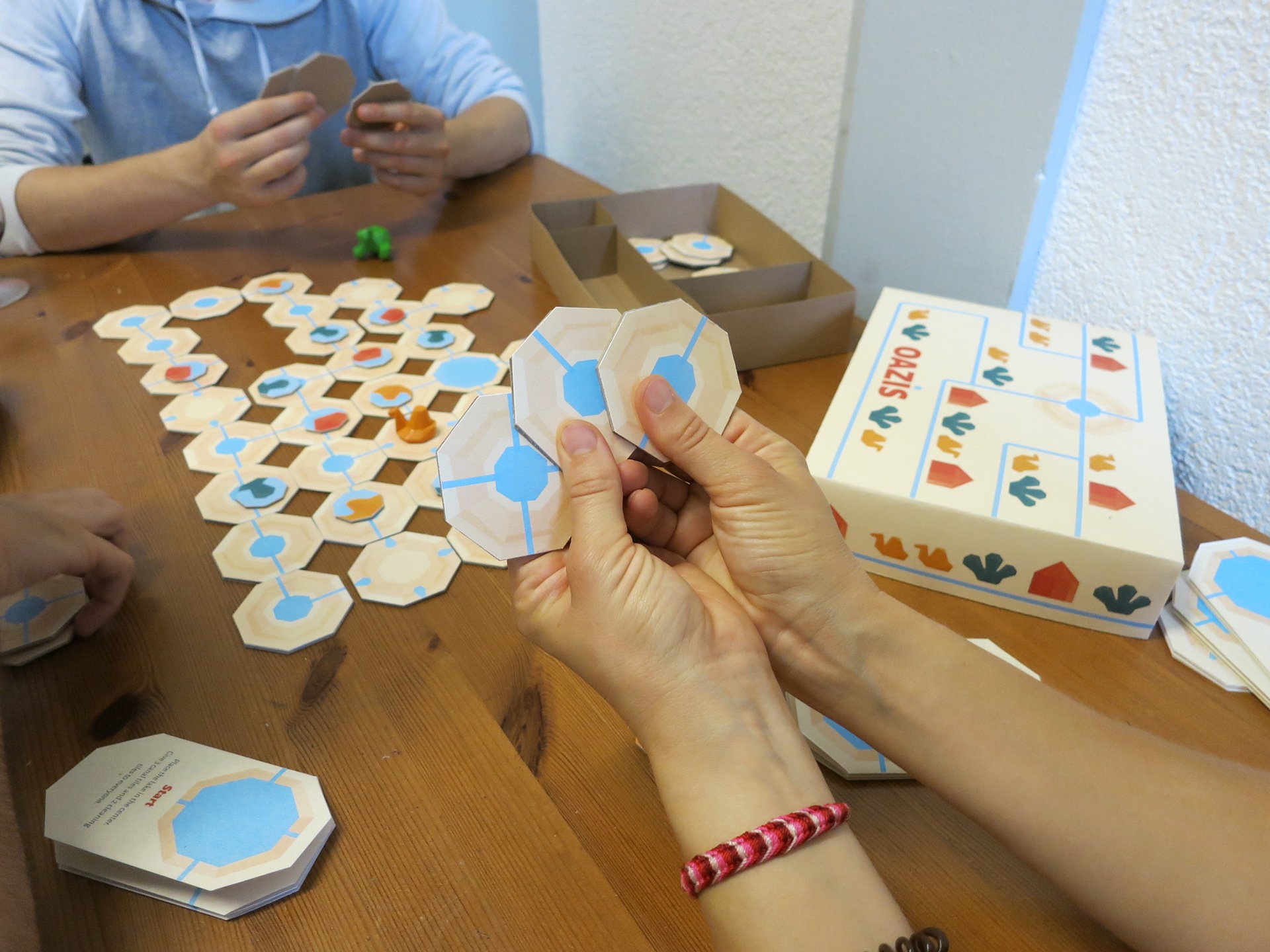
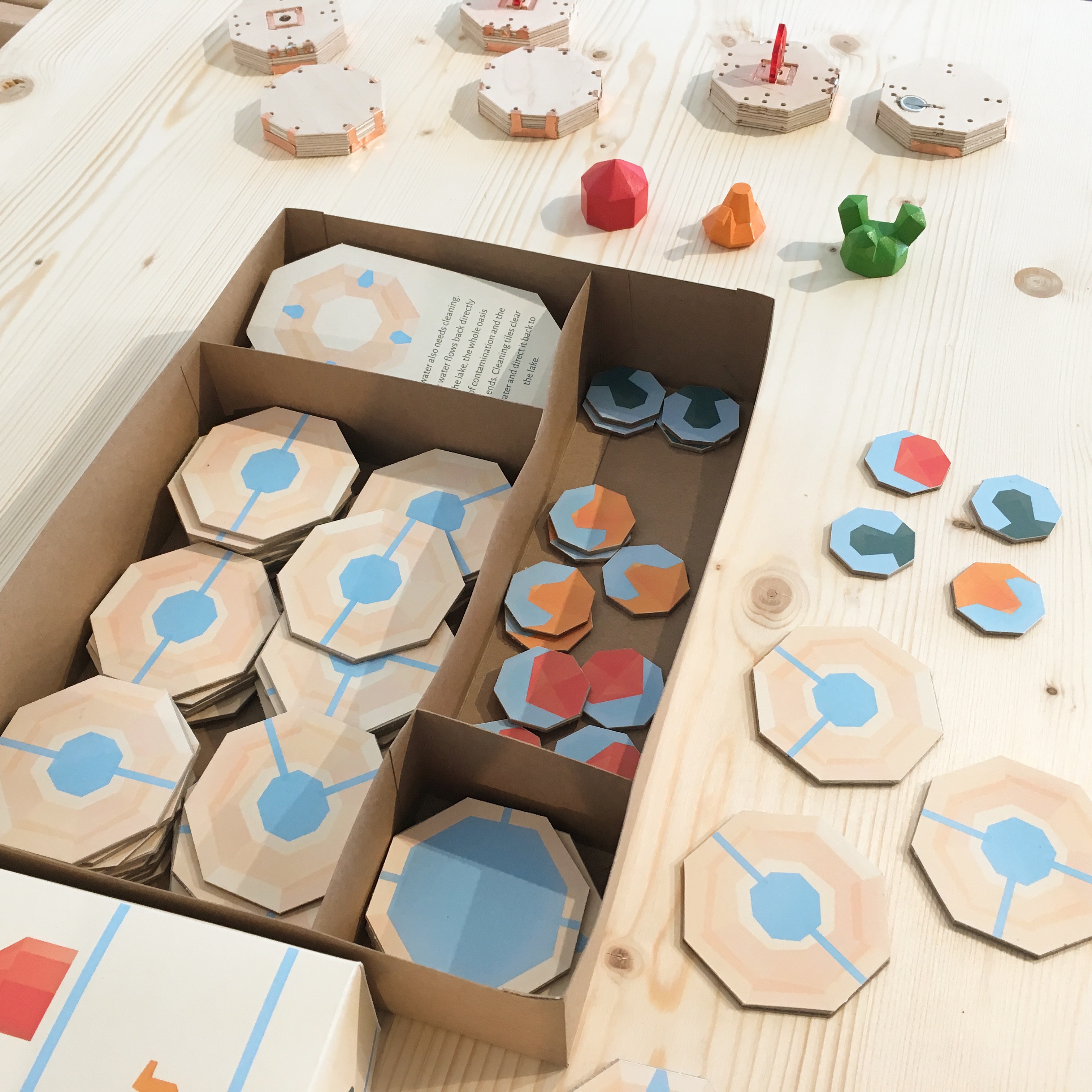
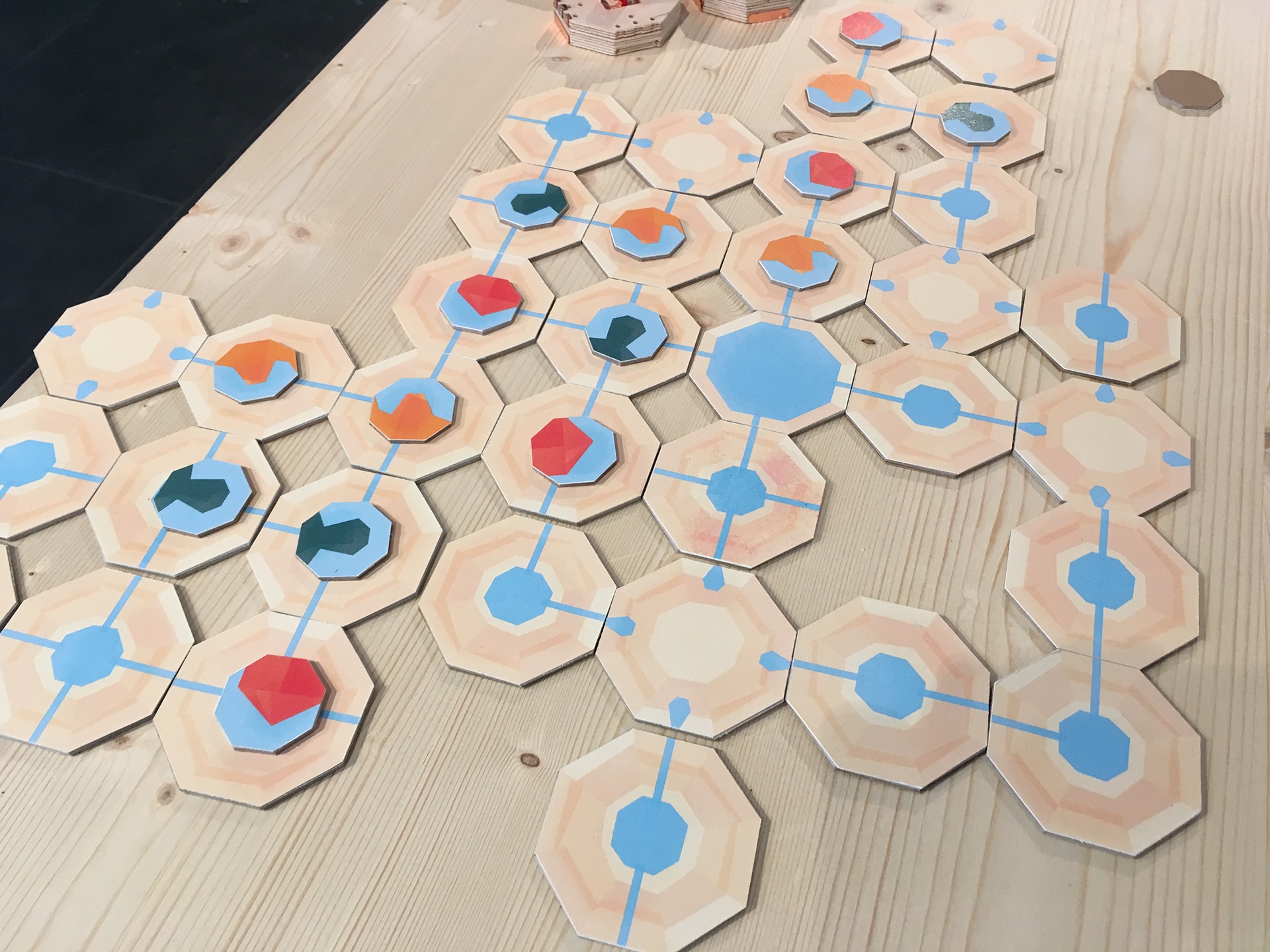
The final prototype would light up if a figure (house, camel, cactus) is well-connected to a circuit, making it much easier to count the points. The next image is a prototype for the circuit and the connections.
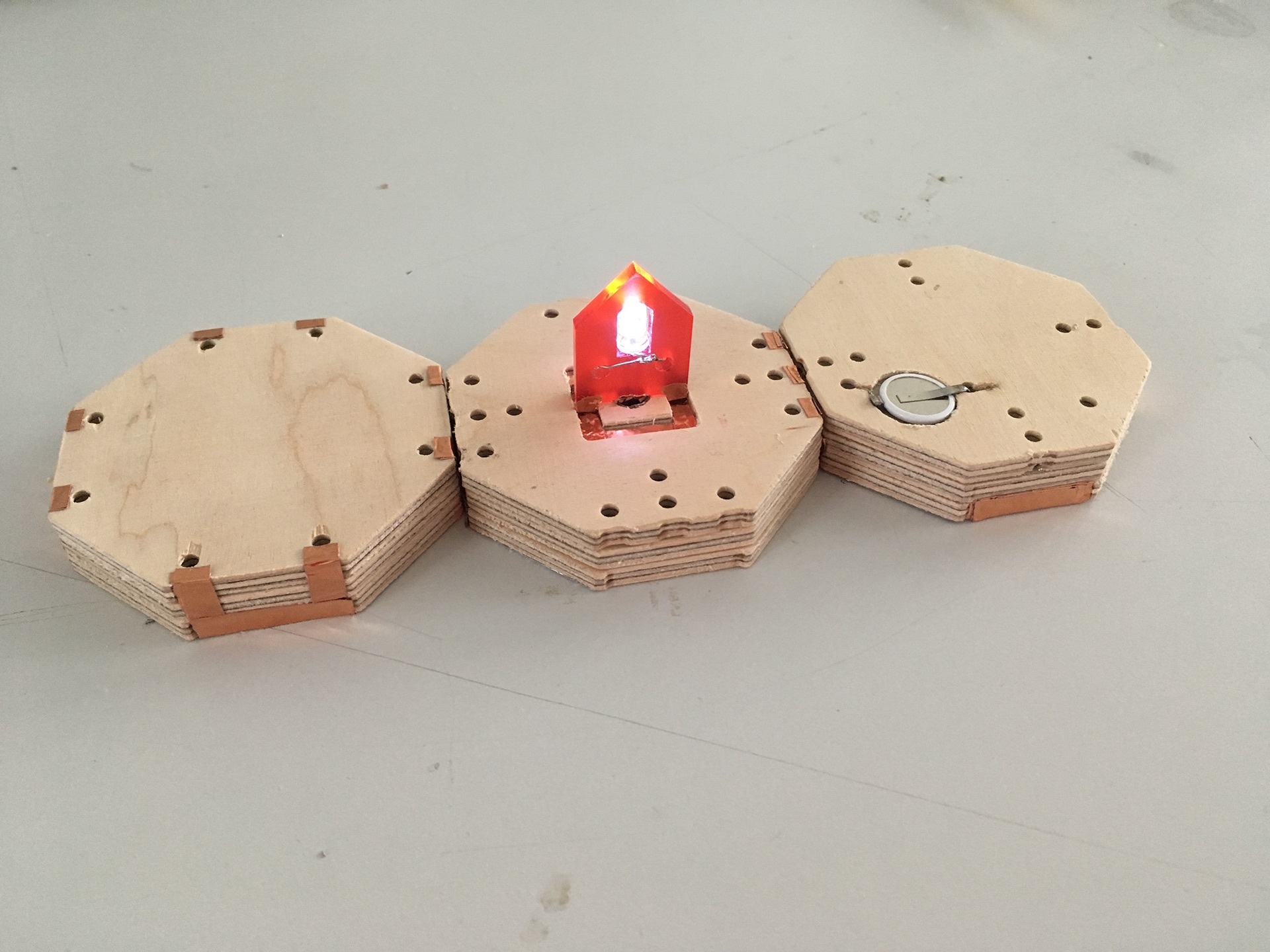
Next steps:
Build a reliably working prototype for a whole gameplay with circuits and LEDs.
Refine how the points are gained: what exactly counts as connected? Is there a counter?
Place some new rules for start and finish, e.g. start with 2 rounds of building, finish when everyone used up their grounds.
HEAD Genève Media Design MA 2017
Tutors: Antonin Fourneau, Gordan Savičić
No comments.